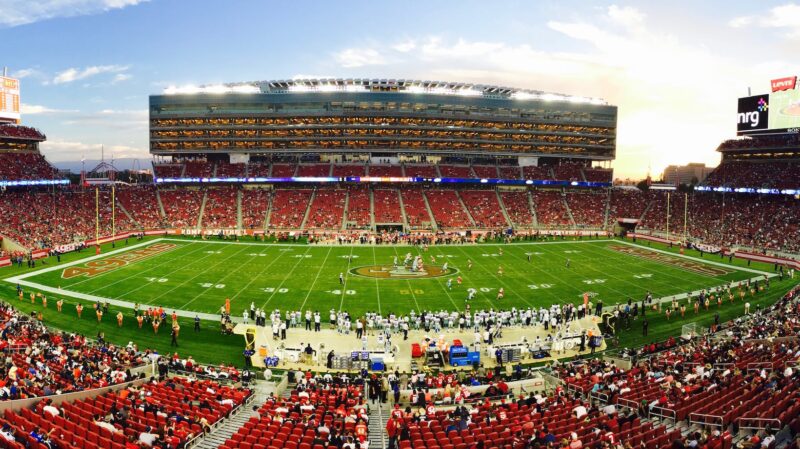
Have you heard of the bubble screen in football? It’s a simple but effective play that can be used at any level of the game.
In this article, we’ll take a look at what a bubble screen is, how it works, and some of the benefits of running this play. So, let’s get started!
what is a bubble screen in football
A bubble screen is a quick, short pass thrown to a receiver who is running towards the sideline. The play is designed to create space for the receiver to catch the ball and then run with it.
The key to making this play work is timing. The quarterback needs to throw the ball at the right time, and the receiver needs to be in the right place. If everything is timed correctly, the receiver should have a few yards of space to work with after catching the ball. This space can then be used to make a move towards the end zone or pick up some extra yardage.
Why is the bubble screen a successful play
The bubble screen is a successful play because it catches the defense off guard. Most defenses are expecting a long pass or a run play, so when the quarterback throws a quick, short pass to the receiver, it can be difficult for the defense to react in time. Another reason why the bubble screen is successful is because it allows the receiver to use their speed and quickness. This can be especially effective against larger, slower defenders.
Lastly, the bubble screen is a low risk play. If the quarterback throws an interception, it’s not likely to be a long gain for the other team since the pass is only being thrown a short distance. This play is also less likely to result in a sack since the quarterback gets rid of the ball quickly. Given all of these benefits, it’s no wonder that the bubble screen is such a popular play at all levels of football.
How can defenses stop the bubble screen
Now that we know how successful the bubble screen can be, you’re probably wondering how defenses can stop it. The key for defenses is to be quick and physical with the receiver. As soon as the receiver catches the ball, the defense needs to close in and make a tackle. If the defense can do this, they’ll likely force a turnover or at least a short gain. Another way to stop the bubble screen is by blitzing the quarterback. If the quarterback is under pressure, he’s less likely to have the time to make a perfect throw. This can cause the pass to be incomplete or result in an interception.
Lastly, some defenses will try to anticipate the bubble screen and jump the route. If the defense can guess correctly, they can be in position to make a big play. However, this is a risky strategy since it can leave the defense out of position if the offense decides to run a different play. The best way to stop the bubble screen is by being quick and physical with the receiver, but there are other strategies that defenses can use as well.
Are there any downsides to using the bubble screen
While the bubble screen can be a successful play, there are some downsides to using it. One downside is that the play is relatively easy to defend if the defense knows it’s coming. Another downside is that the play doesn’t gain a lot of yardage. If the receiver is tackled immediately after catching the ball, it’s unlikely that they’ll pick up many yards.
Lastly, the bubble screen can be a risky play if it’s not executed correctly. If the quarterback doesn’t throw the ball at the right time or the receiver isn’t in the right place, the play could result in a turnover. Given all of these downsides, the bubble screen is best used as a surprise play or as a way to gain a few extra yards. If used correctly, the bubble screen can be a valuable tool for any offense.












